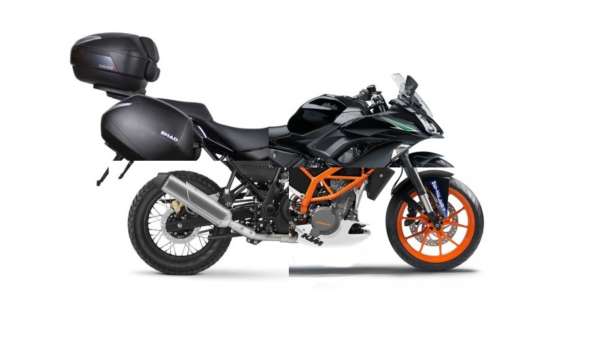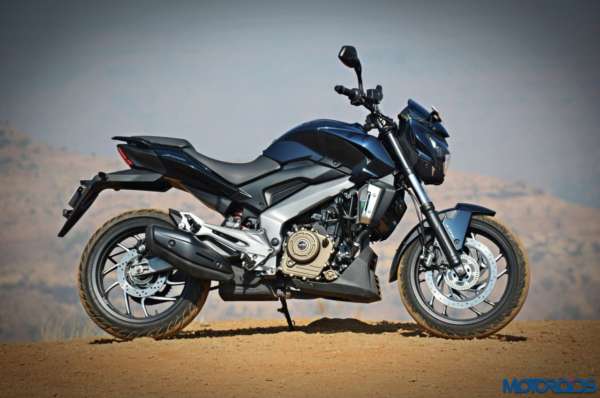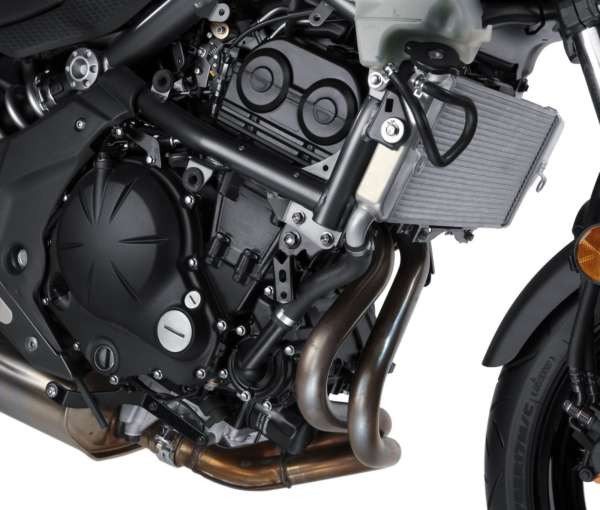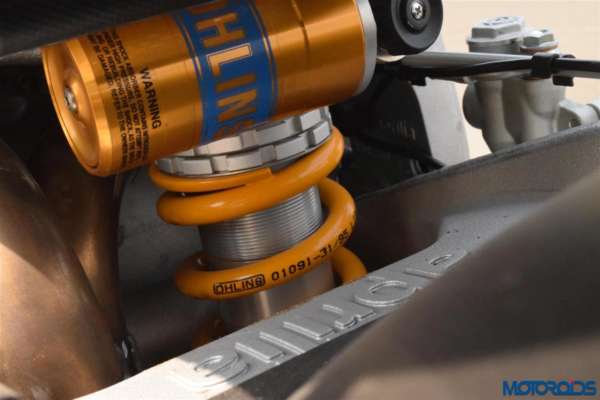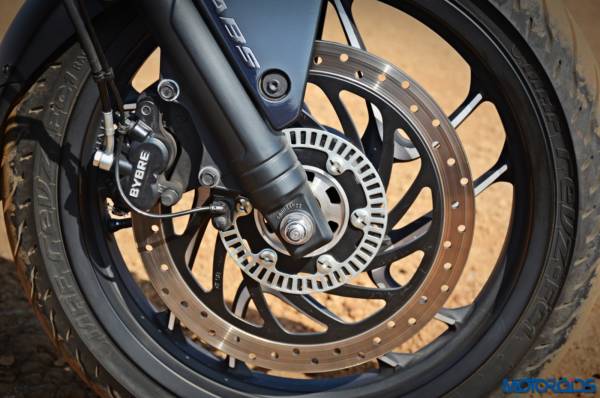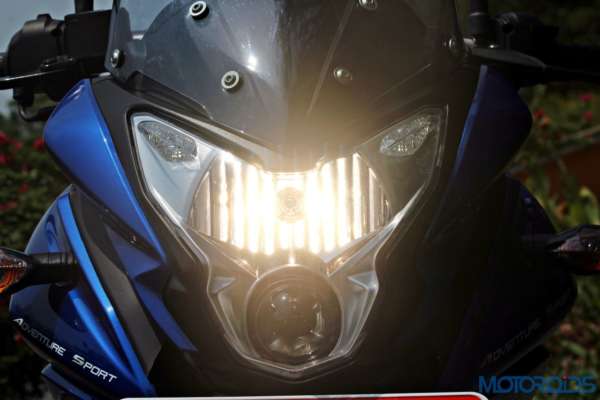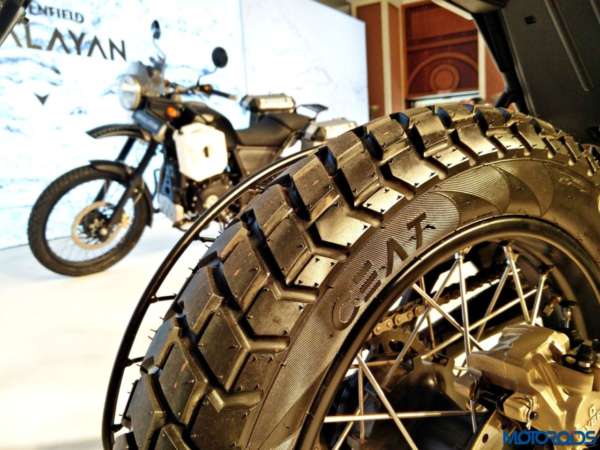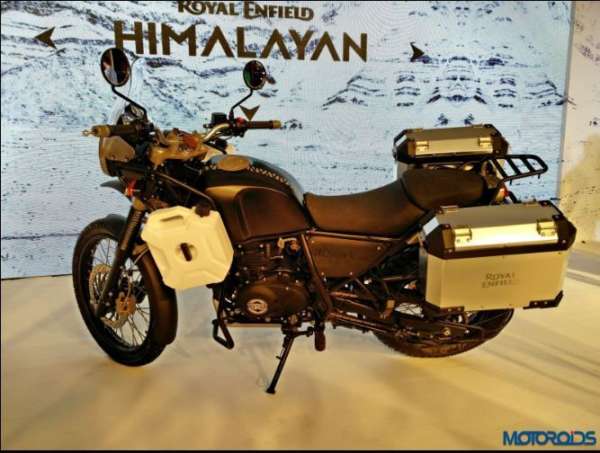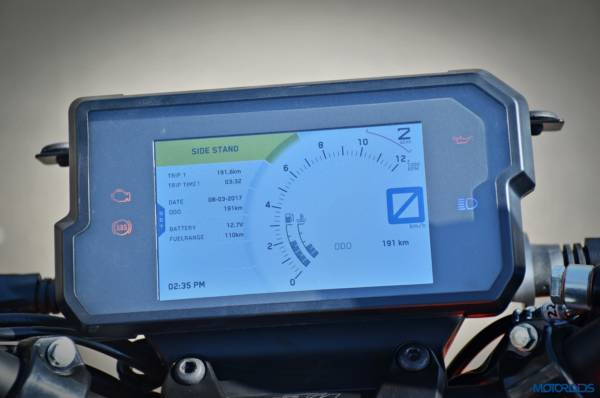The lower middle-weight category, in the Indian context (we’re not talking 600s here) is a queer place to be in for any manufacturer. The buyers upgrading to this segment are looking for far more than just a point to point commuter. Bikes in this segment are something that you would not just use on your daily commute but also to hunt down corners during that weekend ride, help you tour cross country and of course, complete that Leh run that all motorists in India dream about. It is a lifestyle statement – a passport to go to places you never could with lesser machines.
Despite all that this segment represents, the Indian market is still in a very nascent stage. The KTM Duke and RC 390 are both fabulous products, but both are a tad too focused to be a one-size-fits-all proposition. Bajaj tried its luck with the Dominar which was a decent product, no doubt, but it was still not perfect and has its own gremlins. That got us thinking, what is it that we look for when we evaluate a bike in this segment? We recently heard that Honda is also mulling launching a rival to the Dominar and was exploring just what that product could look like. We hope they’re listening. Let’s try to figure then, as to what the perfect do-all motorcycle for India should be like.
1. Stance
While Sports Tourers such as the BMW K1200GT are very common abroad, in India the budgets of a vast majority of bike buyers sit way below the segment. For the uninitiated, sports tourers try to saddle the boundary between high-performance sports bikes and long-distance touring bikes. They allow riders to maintain a relatively upright position with a relaxed riding stance but also allow them to lean in and put their knee out through ghat-sections.The riding position of the Dominar is pretty close to ideal, although it’s total lack of wind protection, somewhat vibey nature and a pillion unfirendly seat isn’t in line with our imagined bike.
The bike should have a high riding belly so as to avoid scrapes on our Mars simulation-tracks, commonly called the Indian streets. At the same time, the ride height should not be so high that most Indian riders struggle to put their feet on the ground. The motorcycle needs to have a solid, sorted chassis-suspension setup which lends itself well to riding on and off the road to a reasonable level.
In terms of design, the motorcycle should have a solid presence with form following function. Comfort and useability should come before frills, and the focus should be to create a design which takes care of all the requirements of an Indian bike enthusiast, while still still looking good.
2. Engine & Transmission
The heart of the matter – the engine, is after all what makes a middle-weight just that. The primary reason a buyer would want to upgrade to this segment is for a more powerful ride. A refined, vibration-less ride is necessary to allow for more stress-free long-distance cruising.
At the same time, the bike should have enough punch to be able to make steady progress on faster highways without too many downshifts. Fuel economy too, would be an important consideration to ensure that you can go farther between two fuel stops. A 25-30 kmpl figure for this sort of a machine would be pretty good.
A 400cc twin cylinder engine would be ideal for the bike we have in mind. An output in the excess of 45 HP and a similar torque number would ensure that the bike can perform beautifully out on the highway and even in the city. A fuel tank with at least 15 Litres capacity is also necessary. The motorcycle should be able to hit a top whack of 180 km/h. The engine should have a meaty low to mid range, though it should have some juice at the top of the rev range as well.
A 6-speed constant mesh transmission would be a solid mate, with the first 4 gears tuned relatively short for easy city ride-ability and the last two gears alightly on the longer side to help the bike cruise at 120 km or thereabout at relaxed revs, further aiding economy. Now, would asking for a slightly throaty exhaust note be pushing it just a bit too far?
3. Suspension & Ride
Considering that a bike in this segment will have to spend a fair amount of time in both, the concrete jungle and out on the highway, an adjustable suspension setup is absolutely necessary.
A gas charged mono-shock at the back with meaty, long travel upside down forks up front would be ideal. This will ensure that the bike can be set to a stiff setting when you are on a weekend highway run but would ensure that your date in the city can ride in comfort.
4. Stopping Power
The bike must have solid disc brakes on both ends with a dual channel ABS system for added safety. This would ensure that you can come to a halt from high speeds without any added drama of brake fade or wheel locking.
5. Seats and Lighting
The seats should be wide and must have an adequately firm compound to allow for comfortable long-distance touring for both the rider and the pillion. A textured seat surface that prevents the rider from sliding around too much would also help. Ample space for side to side and fore and aft movement for the rider is a must.
The bike must have adequate lighting up front to ensure safe night runs. Mounting points for additional lights can also prove to be a useful addition. Pass switches and even pilot lamps should not be given a miss.
6. Tyres and Fairing
The bike should feature large diameter on-off road tyres to cope up with the stress of long-distance touring.
Also very important is a generous wind-deflecting screen that keeps those annoying wind blasts at speed at bay and allows for a comfortable ride even if your’re traveling interstate. A full-front visor adjustable for height to protect riders from strong wind-blasts should be ideal.
7. Modification Friendly
Every biker would like to have the freedom to modify the bike to suit his needs. Mounting points for rear and side luggage carriers and jerry can mounts would be a start.
Easy serviceability and provision of adequate fuses in the electric circuit would help ensure that people can modify the bike according to their needs. A large range of accessories that can be retro-fitted at the dealership level would help buyers remain responsible when they modify their bikes.
8. Instrumentation and other bits
The bike must have a clear multi-function digital display that can display a host of details including two tachometers and the expected range. The digits, especially on the rev-counter and the speedometer must be large enough to be easily read on the go. The trip computer should provide useful information such as distance to dry, average economy etc.
A visor up-front, adjustable for height is a must. A crash guard up front and a high-set exhaust can would also be ideal to suit this definition of the performance bike.
9. Pricing
We think a price-point of a little less than INR 3 lakh for a well-equipped, well built, reliable and attractive looking do-all machine from a reputed manufacturer could find a large number of buyers in the growing performance segment.
10. And most importantly, Cult Culture
The buyer of this segment would definitely judge the bike based on the prestige he gets along with it because anything upwards of INR 2 Lakhs is definitely big money to dole out for a two-wheeler in India. This machine should be built with a long term focus, and should be ready to evolve with the times. It should create a brand name which becomes the definitive choice for someone who’s looking for an all encompassing machine in India. Creating a touring culture, similar to what Royal Enfield does, with regular long-distance rides and other community connect initiatives can help create that aura that a product of this category deserves.
While we hope that someone from the bike manufacturers is listening to this, we would love to hear what your dream performance bike would look like. Do drop us a comment below.

